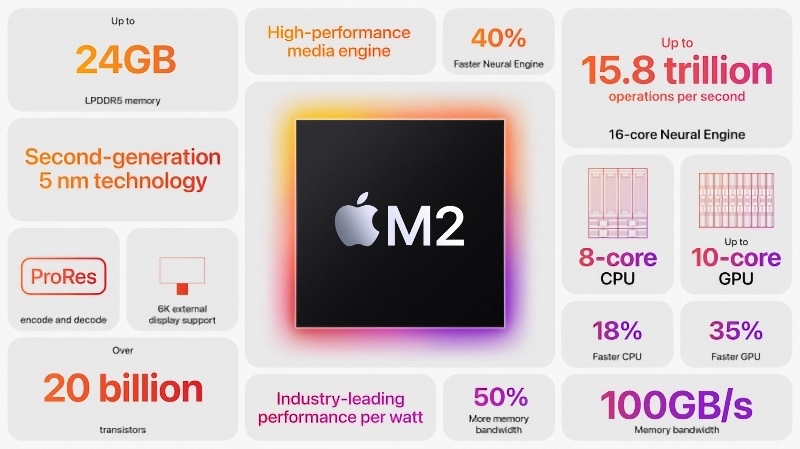Apple halted production of its M2 series chips in January and February 2023, due to “plummeting” Mac sales, says a report from Korean publication, The Elec.
The site says Apple faced “plummeting” Mac sales in a severe PC sales downturn, and in response, the Cupertino firm in January totally suspended production of its custom M2 series processors, used to power new MacBook Pro and Mac mini models, as well as the latest MacBook Air.
Taiwan’s TSMC did not send 5 nano-process M2 chip wafer workpieces to the outsourced semiconductor package test (OSAT) in January and February, according to the OSAT industry on the 3rd. It is believed that it was because Apple requested to stop production as demand for MacBooks dwindled.
From January to February, Taiwan’s TSMC, Apple’s contract chip producer, didn’t send any of its finished 5-nanometer M2 wafers to packaging and testing companies to be cut and assembled as finished chips, the report’s sources said.
While the production of M2 chips resumed after February, production was “only half the level of the previous year,” said the report, quoting a person familiar with the matter.
During Apple’s fiscal Q1 2023 earnings call, CEO Tim Cook said Apple faced a “challenging” situation in the PC market. “The industry is contracting,” said Cook. “We have a low share but we have a competitive advantage with Apple silicon, so strategically we are well positioned within the market. But I think it will be a little rough in the short term.”
Apple debuted the M2 chip in June 2022, when the updated 13-inch MacBook Pro and a new MacBook Air were unveiled. Apple then added M2 Pro and M2 Max variants to its 14-inch and 16-inch MacBook Pro models in January 2023. Apple also added M2 and M2 Pro chips to its Mac mini configuration options.


